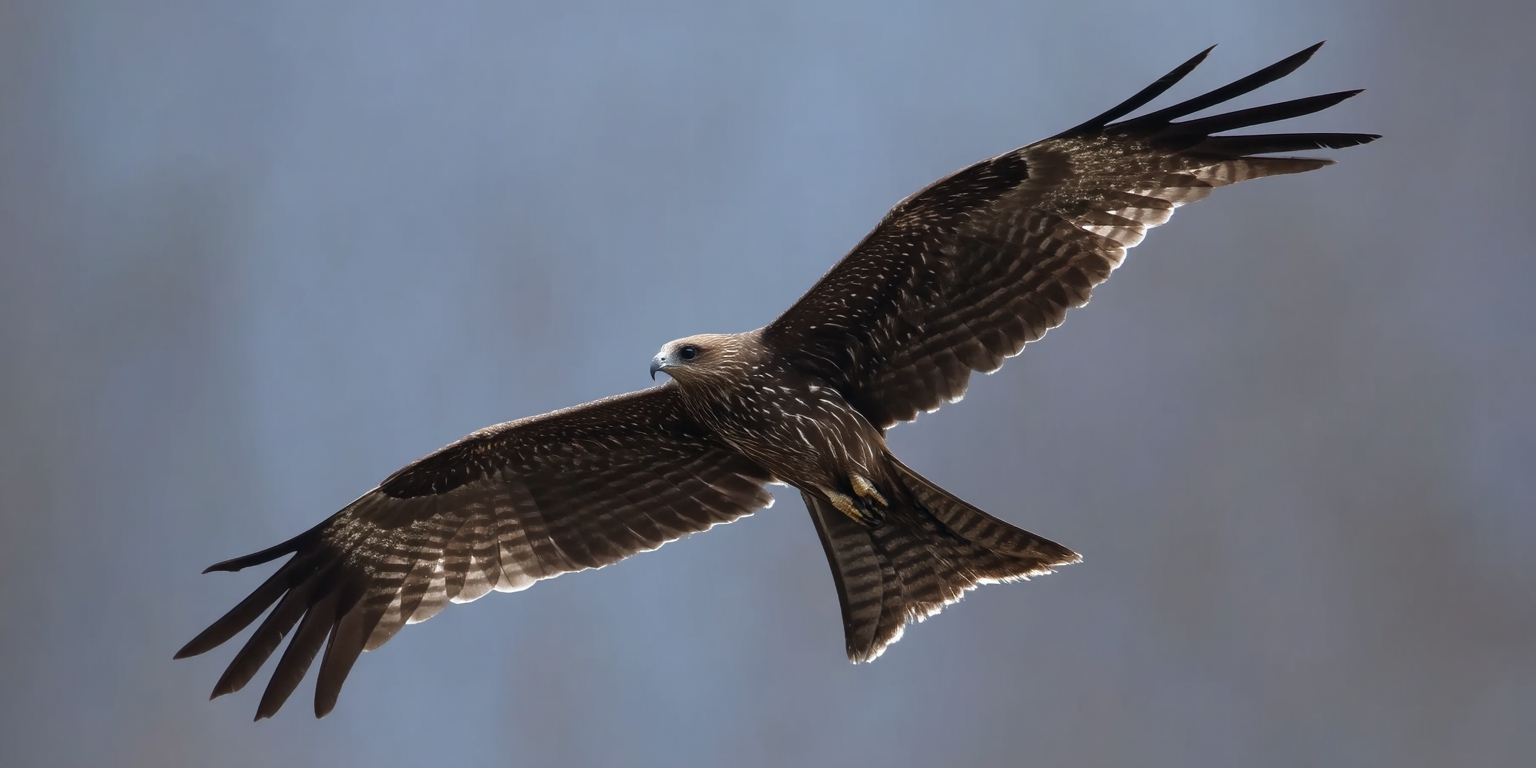Black Kite
The Black Kite (Milvus migrans) is a medium-sized bird of prey known for its agile flight, dark plumage, and distinctive forked tail. It is commonly found in a variety of habitats across Europe, Asia, and parts of Africa, often seen soaring in search of food.

The Black Kite is a versatile and highly adaptive bird of prey, recognized for its graceful and agile flight. With a body length ranging between 50 to 60 cm and a wingspan of about 1.4 to 1.6 meters, it has a sleek and slender build. Its plumage is typically dark brown, with lighter shades on the head, neck, and underparts. One of the most defining features of the Black Kite is its deeply forked tail, which aids in its highly maneuverable flight patterns.
These birds are skilled hunters and scavengers, often seen soaring in thermal currents, scanning for food. They feed on a diverse range of prey, including small mammals, birds, and insects, but they are also known to scavenge from human settlements, where they can often be spotted around garbage dumps or near busy roads. Their diet can vary based on their location, making them highly opportunistic feeders.
The Black Kite is a highly social bird and often forms large groups, particularly during migration, when thousands of individuals can be seen flying together. These migrations occur in the autumn and spring, with birds from colder regions heading southward for the winter. In breeding seasons, they tend to nest in tall trees or man-made structures, where they build large nests made of sticks and twigs.
Despite being common and adaptable, the Black Kite has specific requirements for its habitat. It favors open landscapes like grasslands, wetlands, and agricultural areas, where it can find an abundance of prey. It is also found in urban and suburban environments, where it has adapted to living alongside humans.
The Black Kite is known for its intelligence, often using its sharp eyesight and keen hunting strategies to locate prey. Its vocalizations include a variety of calls, often described as harsh and chattering, which are used in communication, especially during nesting or when in flight.
Though widespread and generally not at risk, local populations of Black Kites can be threatened by habitat destruction and environmental changes. Conservation efforts in various regions aim to protect the bird’s natural habitats and ensure its continued presence in the skies.